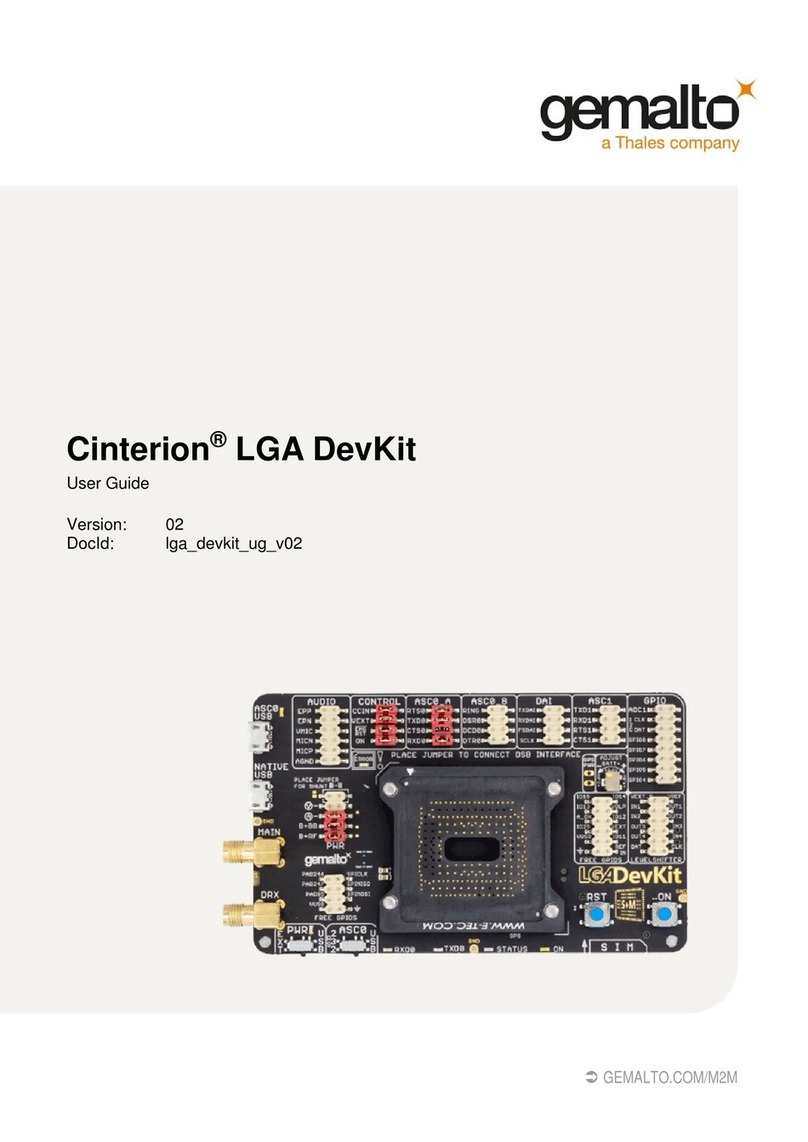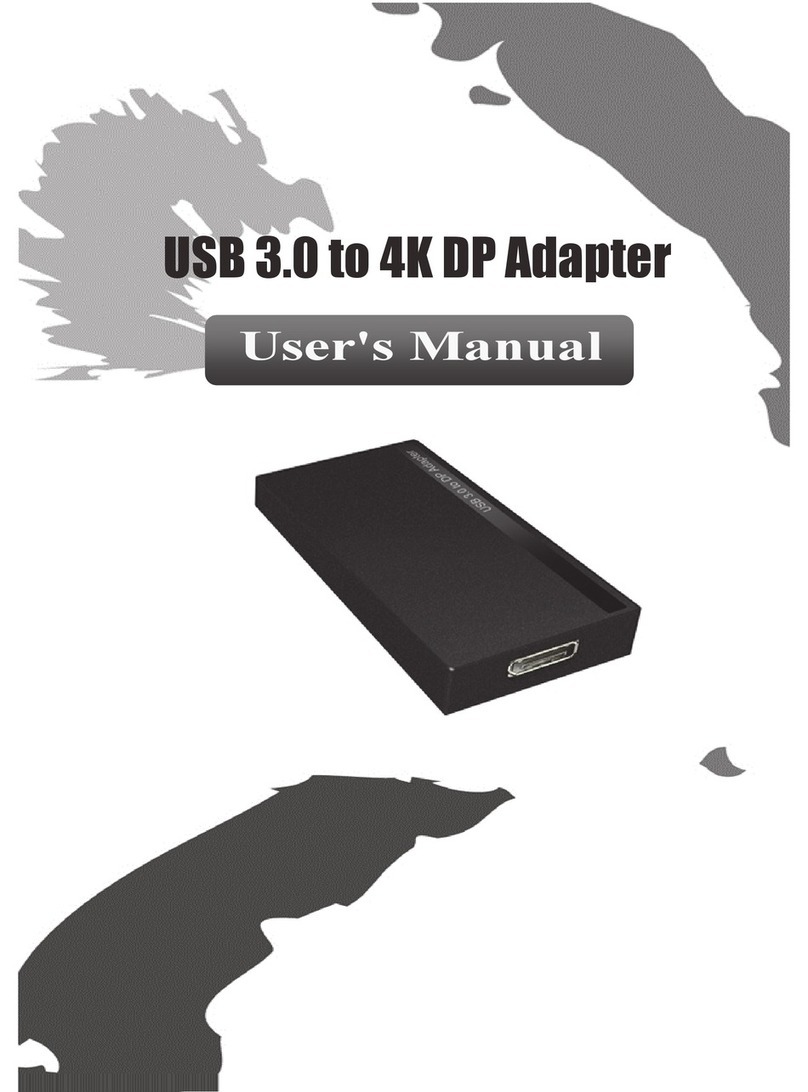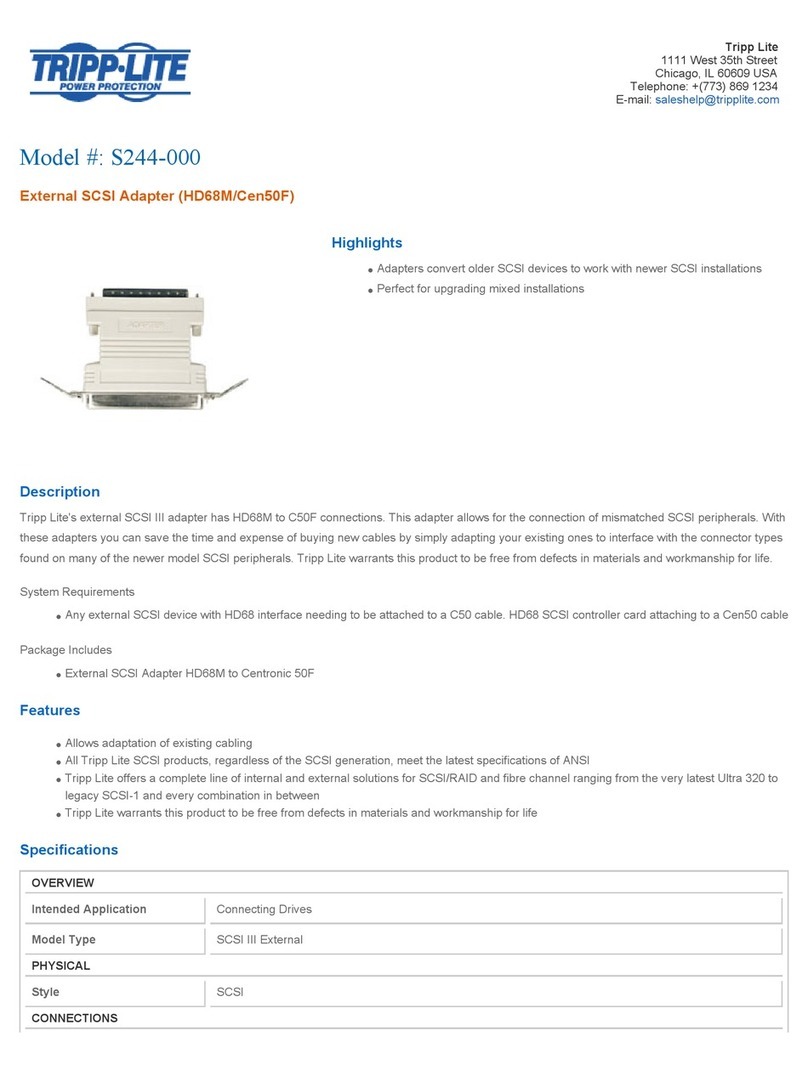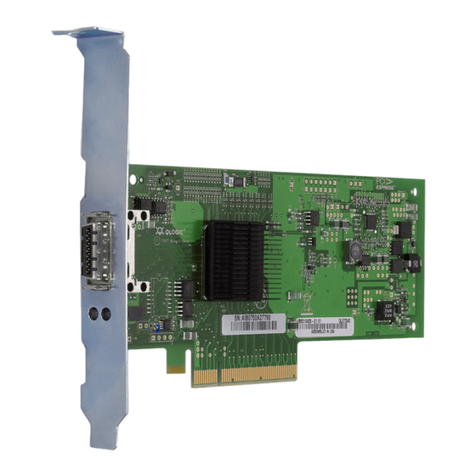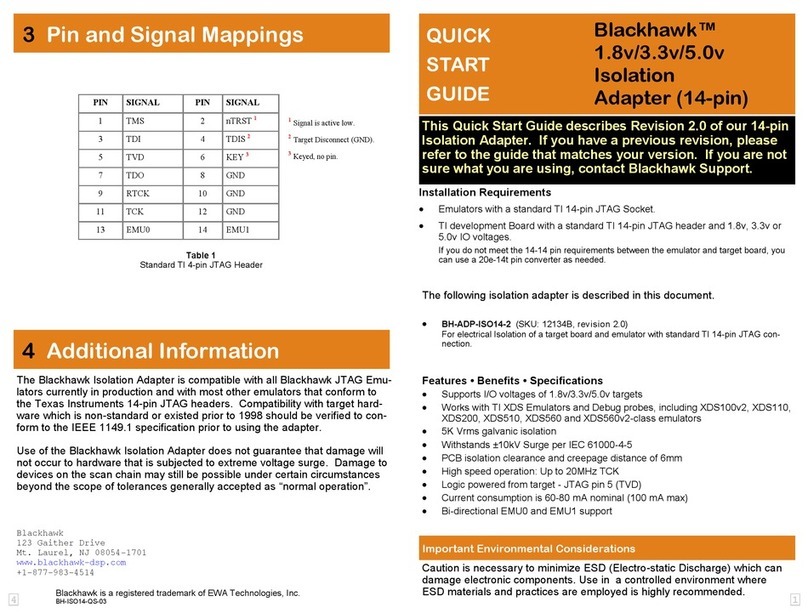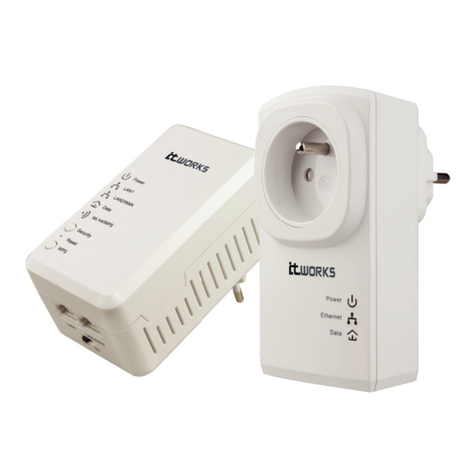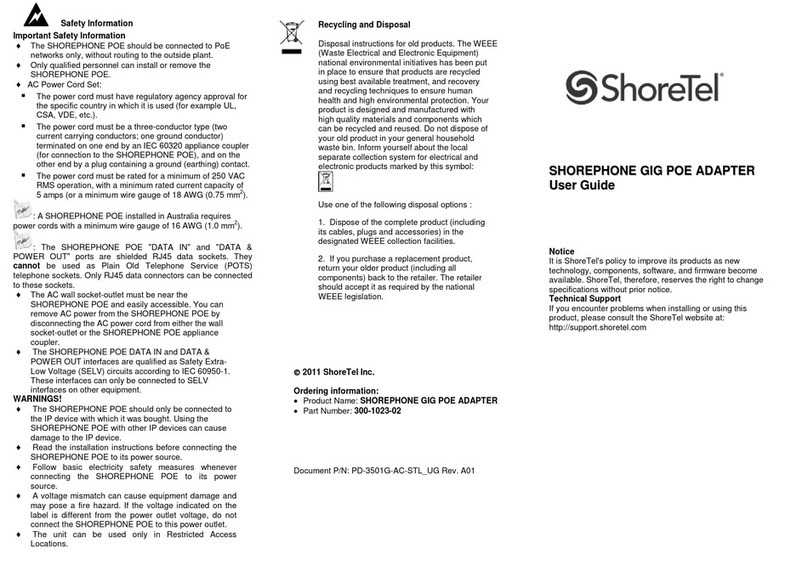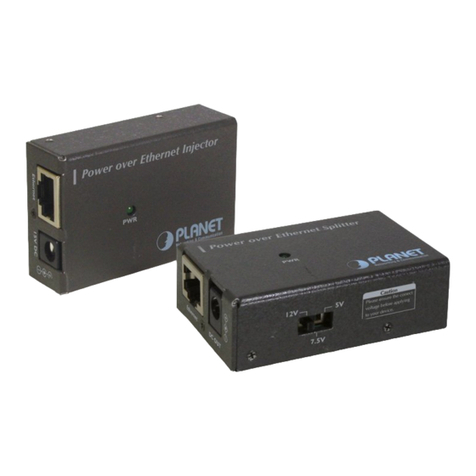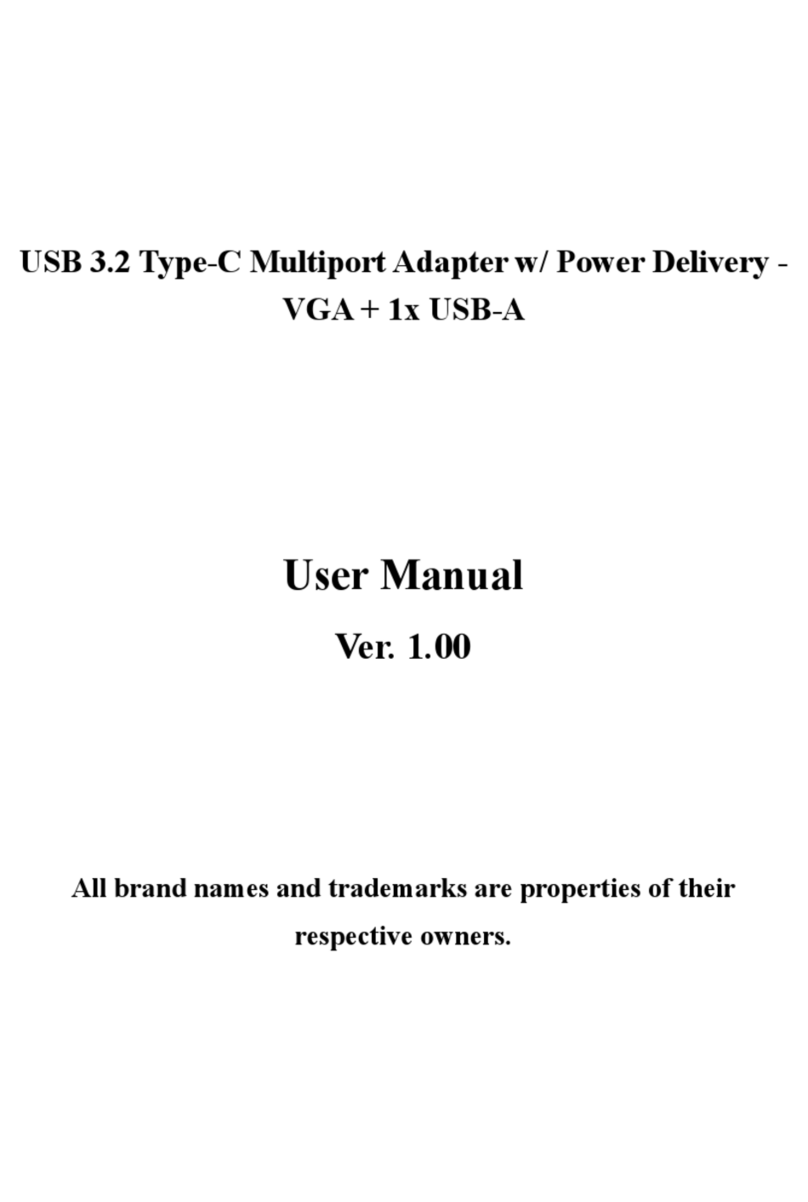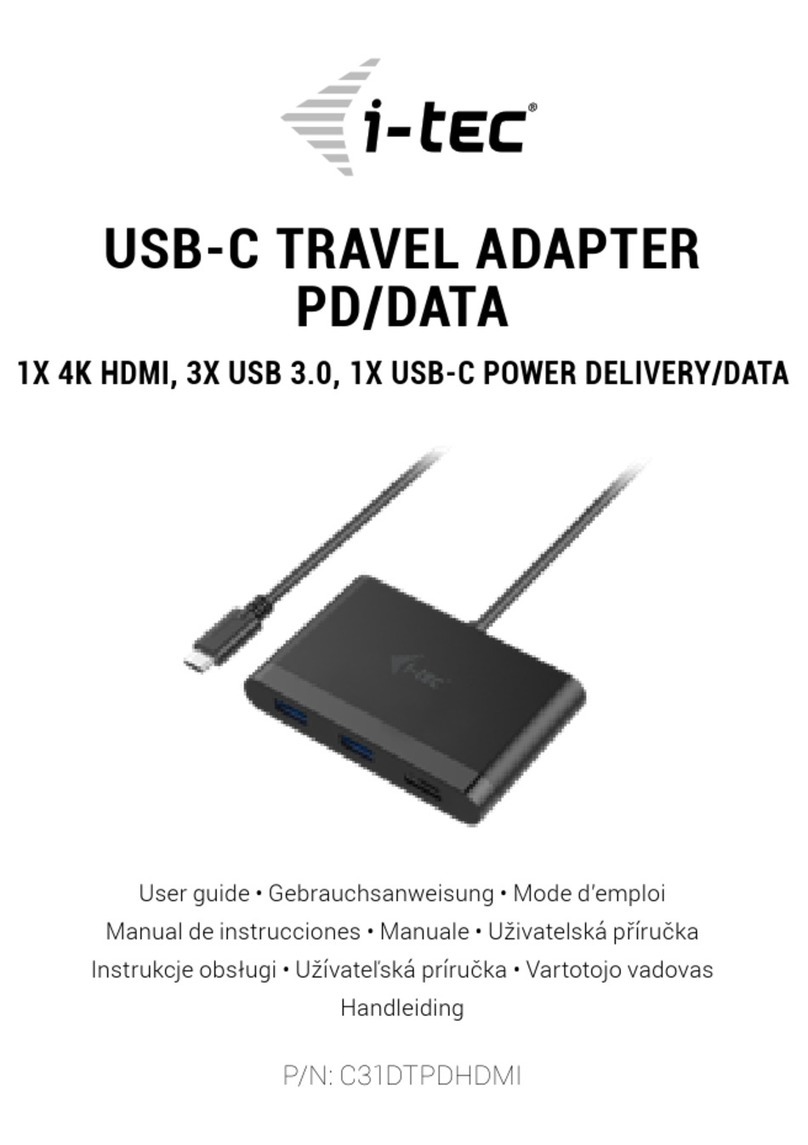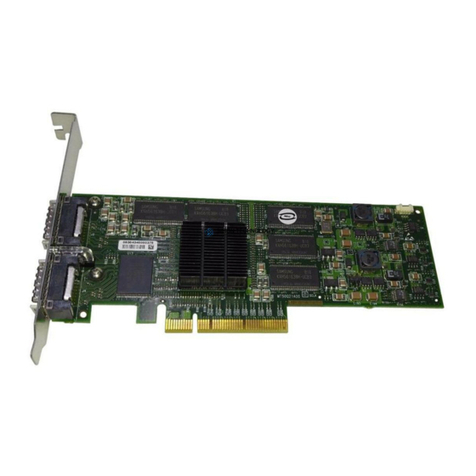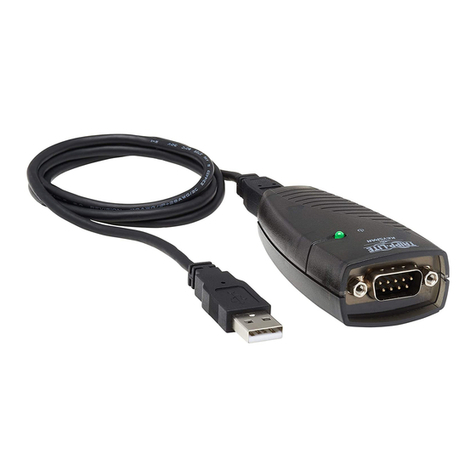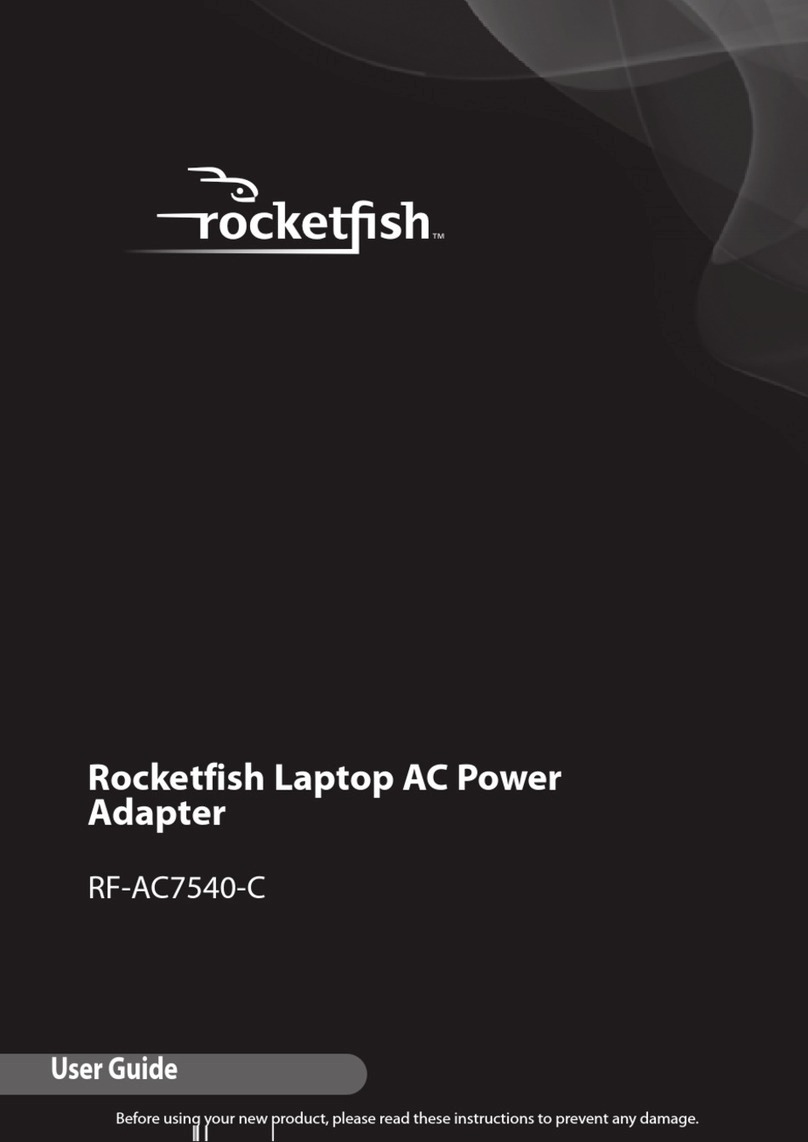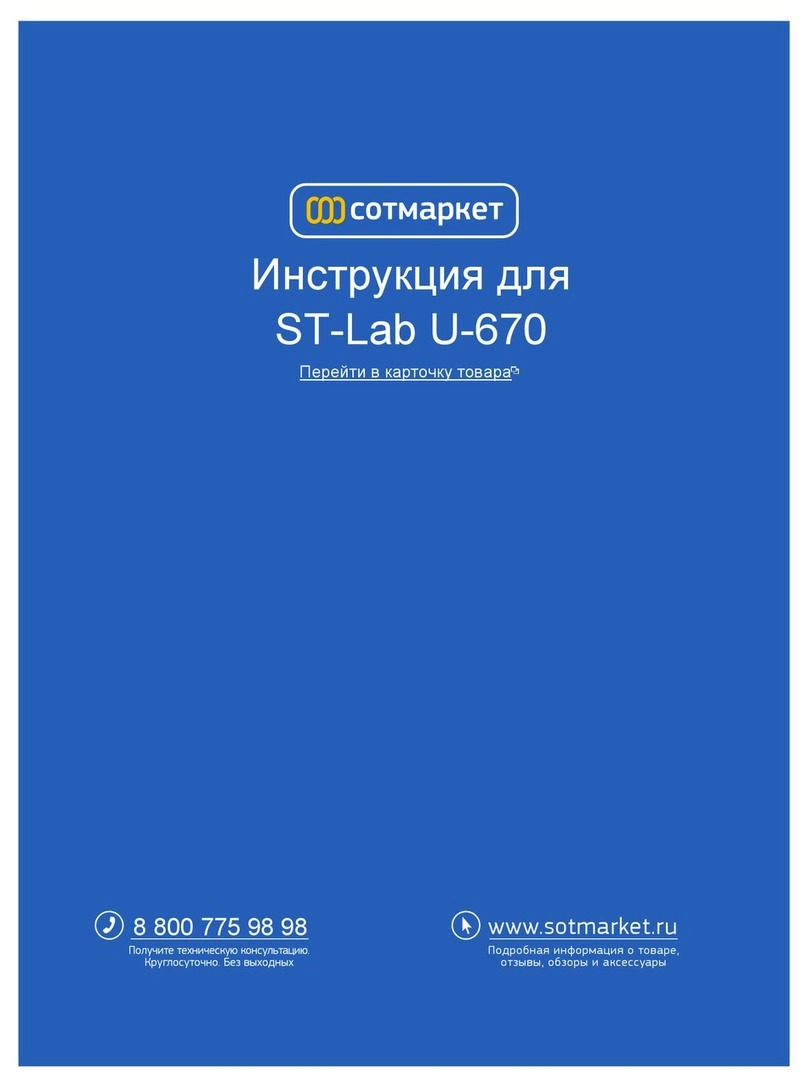Gemalto CSEK Quick setup guide

Google Cloud Platform Customer
Supplied Encryption Key (CSEK)
Beta
Integration Guide

Google Cloud Platform Integration Guide
2
All information herein is either public information or is the property of and owned solely by Gemalto and/or its
subsidiaries who shall have and keep the sole right to file patent applications or any other kind of intellectual
property protection in connection with such information.
Nothing herein shall be construed as implying or granting to you any rights, by license, grant or otherwise, under
any intellectual and/or industrial property rights of or concerning any of Gemalto’s information.
This document can be used for informational, non-commercial, internal and personal use only provided that:
The copyright notice below, the confidentiality and proprietary legend and this full warning notice appear in
all copies.
This document shall not be posted on any publicly accessible network computer or broadcast in any media
and no modification of any part of this document shall be made.
Use for any other purpose is expressly prohibited and may result in severe civil and criminal liabilities.
The information contained in this document is provided “AS IS” without any warranty of any kind. Unless
otherwise expressly agreed in writing, Gemalto makes no warranty as to the value or accuracy of information
contained herein.
The document could include technical inaccuracies or typographical errors. Changes are periodically added to
the information herein. Furthermore, Gemalto reserves the right to make any change or improvement in the
specifications data, information, and the like described herein, at any time.
Gemalto hereby disclaims all warranties and conditions with regard to the information contained herein,
including all implied warranties of merchantability, fitness for a particular purpose, title and non-infringement. In
no event shall Gemalto be liable, whether in contract, tort or otherwise, for any indirect, special or consequential
damages or any damages whatsoever including but not limited to damages resulting from loss of use, data,
profits, revenues, or customers, arising out of or in connection with the use or performance of information
contained in this document.
Gemalto does not and shall not warrant that this product will be resistant to all possible attacks and shall not
incur, and disclaims, any liability in this respect. Even if each product is compliant with current security
standards in force on the date of their design, security mechanisms' resistance necessarily evolves according to
the state of the art in security and notably under the emergence of new attacks. Under no circumstances, shall
Gemalto be held liable for any third party actions and in particular in case of any successful attack against
systems or equipment incorporating Gemalto products. Gemalto disclaims any liability with respect to security
for direct, indirect, incidental or consequential damages that result from any use of its products. It is further
stressed that independent testing and verification by the person using the product is particularly encouraged,
especially in any application in which defective, incorrect or insecure functioning could result in damage to
persons or property, denial of service or loss of privacy.
© 2017 Gemalto. All rights reserved. Gemalto and the Gemalto logo are trademarks and service marks of
Gemalto and/or its subsidiaries and are registered in certain countries. All other trademarks and service marks,
whether registered or not in specific countries, are the property of their respective owners.
Document Number: 007-013795-001, Rev. B
Release Date: August 2017

Contents
Google Cloud Platform Integration Guide
3
Contents
Preface.................................................................................................................................. 4
Scope..............................................................................................................................................................4
Document Conventions ..................................................................................................................................4
Command Syntax and Typeface Conventions.........................................................................................5
Support Contacts......................................................................................................................................6
1Introduction ...................................................................................................................... 7
Overview.........................................................................................................................................................7
Understanding the Customer Supplied Encryption Key .................................................................................7
3rd Party Application Details....................................................................................................................8
Supported Platforms.................................................................................................................................8
Library and Driver Support.......................................................................................................................8
Google Cloud Platform Setup ..................................................................................................................8
Prerequisites...................................................................................................................................................9
SafeNet Luna Network HSM Setup..........................................................................................................9
2Integrating Google Cloud Platform with SafeNet Luna HSM.......................................... 10
Setting up SafeNet Luna HSM with Google Cloud.......................................................................................10
Before You Begin ...................................................................................................................................10
Generating the CSEK for Google Cloud ................................................................................................10
Creating the Encrypted VM using CSEK................................................................................................14
3Appendix........................................................................................................................ 21

Preface
Google Cloud Platform Integration Guide
4
Preface
This document is intended to guide administrators through the steps for integrating Google Cloud Platform with
a SafeNet Luna HSM to secure CSEK (Customer Supplied Encryption Key) keys. This guide provides the
necessary information to install, configure, and integrate Google Cloud Platform with SafeNet Luna HSM.
Scope
This guide provides instructions for setting up a small test lab with Google Cloud Platform running with SafeNet
Luna HSM for securing the CSEK keys. It provides information on how to install and configure software that is
required for setting up Google Cloud Platform while storing CSEK keys on SafeNet Luna HSM.
NOTE: CSEK feature provided by google cloud is in Beta and this feature is
subject to change so customers should proceed with caution when implementing
CSEK in production.
Document Conventions
This section provides information on the conventions used in this template.
Notes
Notes are used to alert you to important or helpful information. These elements use the following format:
NOTE: Take note. Contains important or helpful information.
Cautions
Cautions are used to alert you to important information that may help prevent unexpected results or data loss.
These elements use the following format:
CAUTION: Exercise caution. Caution alerts contain important information that may
help prevent unexpected results or data loss.
Warnings
Warnings are used to alert you to the potential for catastrophic data loss or personal injury. These elements use
the following format:

Preface
Google Cloud Platform Integration Guide
5
WARNING: Be extremely careful and obey all safety and security measures. In
this situation you might do something that could result in catastrophic data loss or
personal injury.
Command Syntax and Typeface Conventions
Convention
Description
bold
The bold attribute is used to indicate the following:
Command-line commands and options (Type dir /p.)
Button names (Click Save As.)
Check box and radio button names (Select the Print Duplex check box.)
Window titles (On the Protect Document window, click Yes.)
Field names (User Name: Enter the name of the user.)
Menu names (On the File menu, click Save.) (Click Menu > Go To > Folders.)
User input (In the Date box, type April 1.)
italic
The italic attribute is used for emphasis or to indicate a related document. (See the
Installation Guide for more information.)
Consolas
Denotes syntax, prompts, and code examples.

Preface
Google Cloud Platform Integration Guide
6
Support Contacts
Contact Method
Contact Information
Address
Gemalto
4690 Millennium Drive
Belcamp, Maryland 21017, USA
Phone
US
1-800-545-6608
International
1-410-931-7520
Technical Support
Customer Portal
https://supportportal.gemalto.com
Existing customers with a Technical Support Customer Portal account can log in to
manage incidents, get the latest software upgrades, and access the Gemalto Knowledge
Base.

1 –Introduction
Google Cloud Platform Integration Guide
7
1
Introduction
Overview
This integration guide describes how to store the Customer Supplied Encryption Key (CSEK) on a SafeNet Luna
HSM partition. By default, Google Compute Engine uses encryption keys stored in the cloud to encrypt all data
at rest and manages this encryption for you without any additional actions on your part. Keeping the encryption
keys in the cloud, however, may not be in compliance with security standards. To avoid this issue, you can
control and manage this encryption yourself, by providing your own encryption keys.
If you provide your own encryption keys, Compute Engine uses your key to encrypt, and therefore protect the
Google-generated keys used to encrypt and decrypt your data. Only users who can provide the correct
encryption key can use resources protected by a customer-supplied encryption key.
Google does not store your encryption keys on their servers and cannot access your protected data unless you
provide the key. If you forget or lose your encryption key, there is no way for Google to recover the key or to
recover any data encrypted with the lost key. In this guide, we will cover the installation and configuration of
Google Cloud Platform on Windows Server 2012 R2 using SafeNet Luna HSM.
The benefits of using SafeNet Luna HSM with the Google Cloud Platform are:
Secure storage of the CSEK Keys
FIPS 140-2 level 3 validated hardware
Full life cycle management of the keys
Understanding the Customer Supplied Encryption Key
Server-side encryption refers to encryption that occurs after Cloud Storage receives your data, but before the
data is written to disk and stored.
As an alternative to a Google-managed server-side encryption key, you can choose to provide your own AES-
256 key, encoded in standard Base64. This key is known as a customer-supplied encryption key (CSEK). If you
provide a CSEK, Cloud Storage does not permanently store your key on Google's servers or otherwise manage
your key. Instead, you provide your key for each Cloud Storage operation, and your key is purged from Google's
servers after the operation is complete. Cloud Storage stores only a cryptographic hash of the key so that future
requests can be validated against the hash. Your key cannot be recovered from this hash, and the hash cannot
be used to decrypt your data.
Customer-supplied encryption keys can apply to operations on an object that read or write data. Operations
such as deleting or listing objects can be performed without providing the encryption key.

1 –Introduction
Google Cloud Platform Integration Guide
8
3rd Party Application Details
Google Cloud Platform
Supported Platforms
SafeNet Luna HSMs.
Library and Driver Support
PKCS#11 v2.20 dynamic library
Google Cloud Platform Setup
Google Cloud Platform requires that you have the ability to login in to Google Cloud Console. A Google account
is sufficient for login. To use Google Cloud Services, you need to login to Google Cloud Console using your
browser and setup your account. The URL for login to Google Cloud Services is provided below:
https://console.cloud.google.com
To begin using the Google Cloud Platform, you need to download and install the Google Cloud SDK on the
system you are working on. The Google Cloud SDK provides a set of tools for Cloud Platform. It contains
gcloud, gsutil, and bq, which you can use to access Google Compute Engine, Google Cloud Storage, Google
BigQuery, and other products and services you can access from the command-line.
You can run these tools interactively or in your automated scripts. The URL for downloading and setting up
Cloud SDK is provided below:
https://cloud.google.com/sdk/
For more detailed information refer the Google Cloud Online documentation at https://cloud.google.com/docs/.
NOTE: Before proceeding ensure that CSEK feature support is available for your
country, if your country is not supported then this feature will not work. List of
supported countries for CSEK is available in google cloud online documentation.
https://cloud.google.com/storage/docs/encryption#restrictions

1 –Introduction
Google Cloud Platform Integration Guide
9
Prerequisites
SafeNet Luna Network HSM Setup
Refer to the SafeNet Luna Network HSM documentation for installation steps and details regarding configuration
and setup of the SafeNet Luna Network HSM on Windows/Unix systems. Before you get started ensure that you
have a performed the following tasks to prepare the SafeNet Luna Network HSM for use with Google Cloud:
Configure the SafeNet Luna Network HSM appliance as follows:
A secure appliance admin password.
A hostname suitable for your network.
Network parameters set to work with your network.
Initialize the HSM on the SafeNet Luna Network HSM appliance to create an HSM SO, cloning domain, and
label.
Create a partition on the HSM and remember the partition password as it will be used by Client to access
the partition.
Use VTL to create, exchange, and register certificates between the SafeNet Luna Network HSM and the
Client system to create an NTLS link. Run the vtl verify command on the client system to verify the link.
Enable Partition "Activation" and "Auto Activation" (Partition policy settings 22 and 23 applies to SafeNet
Luna Network HSM with Trusted Path Authentication [which is FIPS 140-2 level 3] only).

2 –Integrating Google Cloud Platform with SafeNet Luna HSM
Google Cloud Platform Integration Guide
10
2
Integrating Google Cloud Platform with
SafeNet Luna HSM
Setting up SafeNet Luna HSM with Google Cloud
HSMs provide strong physical protection of secure assets, including keys, and should be considered a best
practice when using cloud.
Before You Begin
Read the VM instances documentation on Google Cloud.
To use the command-line examples in this guide:
a. Install the Luna Client and create NTLS with the HSM partition.
b. Download and install the Open SSL and add openssl.exe location to PATH variable in System
Environment.
c. Install the gcloud command-line tool.
d. Set a default region and zone.
Read about disks, images, and persistent disk snapshots.
Generating the CSEK for Google Cloud
After creating the NTLS connection with HSM partition download and import the Google Public Key on the HSM
partition which will be use to wrap the generated AES256 key.
To use the CSEK for Google Cloud with SafeNet Luna HSM follow the steps below.
1. Download the public certificate maintained by Google Compute Engine from:
https://cloud-certs.storage.googleapis.com/google-cloud-csek-ingress.pem
Save the file in Luna Client Installation directory. This will simplify execution of other commands.
2. Open the command prompt and go to the SafeNet Luna Client installation directory.
# cd “C:\Program Files\SafeNet\LunaClient”
3. Extract the public key from the certificate using Open SSL:
# openssl x509 -pubkey -noout -in google-cloud-csek-ingress.pem > pubkey.pem
4. Import the extracted Public Key to HSM partition using the cmu utility provided with SafeNet Luna Client.
# cmu import -pubkey pubkey.pem -inputFile pubkey.pem -label "google public key"

2 –Integrating Google Cloud Platform with SafeNet Luna HSM
Google Cloud Platform Integration Guide
11
Please enter password for token in slot 0: ********
Provide the partition password when prompted.
5. Run the cmu list command to ensure the key is imported successfully.
# cmu list
Please enter password for token in slot 0: ********
handle=718 label=google public key
Provide the partition password when prompt.
6. Ensure the Public Key attributes (Encrypt, Verify, Wrap) are set to true using the cmu command below:
# C:\Program Files\SafeNet\LunaClient>cmu getAttribute -handle=718
Please enter password for token in slot 0: ********
class=publicKey
token=true
private=true
label=google public key
keytype=RSA
subject=
id=
encrypt=false
wrap=false
verify=true
derive=false
startdate=
enddate=
modulus=a60e0ea3bca01019809738546459b6ef92bdf7d4ea363be08808bfa52cc0252e973b7b1adf8eb36588d9a63e
25e0e3f94f6c6598f5e817f8a06c23bd8c0796f98f0dd5567a2d1bcf43e9dd3f6d99c8bfe488915cd63515ac19bd22dcd319
23b8e19e00efbb8381ad5e01690883ff629a9fad634aa6966867447c28424643535734f122c0e29e8857736cb20c0a68df0a
c0ce77283c70ea40e8d0835f4be62630d67ca0783c149e50dc4c51e787c3d7f5859e03927b1a7336d1af64631aa029c848cb
a6128f277c436d317c672eabae06f600390110b3bbe5d044bf0c3d1d3735689d94e8f7f73ccabd1295c5a0f14cbb5e40f915
0484e40f3ba4e6540c470315
modulusbits=2048
publicexponent=010001
local=false
modifiable=true
Where handle is the key handle of the public key. Provide the partition password when prompted.
7. If the attributes (Encrypt, Verify, Wrap) are not true then set them using the command below:
# cmu setAttribute -handle=718 -encrypt=true -wrap=true
Please enter password for token in slot 0: ********
Where handle is the key handle of the public key. Provide the partition password when prompted.

2 –Integrating Google Cloud Platform with SafeNet Luna HSM
Google Cloud Platform Integration Guide
12
8. Now create an AES256 key on HSM partition that will be used to encrypt the contents on cloud. To generate
the key run the ckdemo utility provided with Luna Client.
# ckdemo
It will show you the available options and prompt for your choice, below are choices (Numeric Values) to
generate an AES256 key
( 1) Open Session
Enter your choice: 1
( 3) Login
Enter your choice: 3
Crypto Officer [0]
Crypto User [1]: 0
Enter PIN : ********
(45) Simple Generate Key
Enter your choice: 45
Select type of key to generate
[ 1] DES [ 2] DES2 [ 3] DES3 [ 5] CAST3
[ 6] Generic [ 7] RSA [ 8] DSA [ 9] DH [10] CAST5
[11] RC2 [12] RC4 [13] RC5 [14] SSL3 [15] ECDSA
[16] AES [17] SEED [18] KCDSA-1024 [19] KCDSA-2048
[20] DSA Domain Param [21] KCDSA Domain Param
[22] RSA X9.31 [23] DH X9.42 [24] ARIA
[25] DH PKCS Domain Param [26] RSA 186-3 Aux Primes
[27] RSA 186-3 Primes [28] DH X9.42 Domain Param
[29] ECDSA with Extra Bits
> 16
Enter Key Length in bytes (16, 24, 32): 32
Enter Is Token Attribute [0-1]: 1
Enter Is Sensitive Attribute [0-1]: 1
Enter Is Private Attribute [0-1]: 1
Enter Encrypt Attribute [0-1]: 1
Enter Decrypt Attribute [0-1]: 1
Enter Sign Attribute [0-1]: 1
Enter Verify Attribute [0-1]: 1
Enter Wrap Attribute [0-1]: 1
Enter Unwrap Attribute [0-1]: 1
Enter Derive Attribute [0-1]: 1
Enter Extractable Attribute [0-1]: 1

2 –Integrating Google Cloud Platform with SafeNet Luna HSM
Google Cloud Platform Integration Guide
13
Generated AES Key: 715 (0x000002cb)
Where 715 is handle of generated AES Key
9. Wrap your key using the public key provided in a certificate that Compute Engine manages. Please ensure
to wrap your key using OAEP padding. To wrap the key use the same CKDEMO session and provide the
choices to wrap the AES key using OAEP padding.
(60) Wrap key
Enter your choice: 60
[1]DES-ECB [2]DES-CBC [3]DES3-ECB [4]DES3-CBC
[7]CAST3-ECB [8]CAST3-CBC
[9]RSA [10]TRANSLA [11]DES3-CBC-PAD [12]DES3-CBC-PAD-IPSEC
[13]SEED-ECB [14]SEED-CBC [15]SEED-CBC-PAD [16]DES-CBC-PAD
[17]CAST3-CBC-PAD [18]CAST5-CBC-PAD [19]AES-ECB [20]AES-CBC
[21]AES-CBC-PAD [22]AES-CBC-PAD-IPSEC [23]ARIA-ECB [24]ARIA-CBC
[25]ARIA-CBC-PAD [26]RSA_OAEP [27]SET_OAEP
[30]AES-KW [35]AES-KEY-WRAP
Select mechanism for wrapping: 26
Enter filename of OAEP Source Data [0 for none]: 0
Enter handle of wrapping key (0 to list available objects): 718
Enter handle of key to wrap (0 to list available objects): 715
Wrapped key was saved in file wrapped.key
Where 718 and 715 is the handle of Google Public Key and AES256 key respectively.
NOTE: wrapped.key is the output file that contains the wrapped AES key.
10. Exit from ckdemo session now by providing the choice as 0.
Enter your choice: 0
Exiting GESC SIMULATION LAB
11. Encode your RSA-wrapped key in base64 using following Open SSL command:
# openssl enc -base64 -in wrapped.key > rsawrapencodedkey.txt
12. Open the rsawrapencodedkey.txt file in any editor and ensure that the complete key is present in the single
line and remove any new Line Feed/Carriage Return.
13. Open the Google Cloud SDK Shell and use the gcloud init command to perform several common SDK
setup tasks. These include authorizing the SDK tools to access Google Cloud Platform using your user
account credentials and setting up the default SDK configuration. Installation steps are provided at
https://cloud.google.com/sdk/docs/quickstart-windows URL.

2 –Integrating Google Cloud Platform with SafeNet Luna HSM
Google Cloud Platform Integration Guide
14
Creating the Encrypted VM using CSEK
Creating an encrypted disk or VM is pretty easy. This guide demonstrated creation of encrypted VM using
console and gcloud tool provided by google.
Using Google Console
1. Log on to the Google Cloud Console using the below URL by providing your Google credentials.
https://console.cloud.google.com
2. Click Compute Engine -> Disks -> Create disk.

2 –Integrating Google Cloud Platform with SafeNet Luna HSM
Google Cloud Platform Integration Guide
15
3. Enter the Name, Description, select Zone and Disk Type as Standard persistent disk. Select Source
type, Source Image (OS that need to be installed) and Size (GB). Select Encryption as Customer
Supplied and enter the key in text box provided. Copy the contents of rsawrapencodedkey.txt and paste it.
Select the Wrapped key and after providing all the details click Create.
It creates the disk encrypted by customer supplied key and it can be used to create the VM instance on
cloud.
4. Click VM Instances -> Create.

2 –Integrating Google Cloud Platform with SafeNet Luna HSM
Google Cloud Platform Integration Guide
16
5. Enter the Name and select Zone, Machine type. In the Boot disk section, click Change and then click
Existing disk. It displays the disk created in the previous steps using CSEK Encryption. When disk is
selected, it prompts to enter the key. Provide the same key which you have used to encrypt the disk and
select the Wrapped key checkbox. Click Select.
6. Select Allow HTTP traffic and Allow HTTPS traffic in the Firewall section and click Create.

2 –Integrating Google Cloud Platform with SafeNet Luna HSM
Google Cloud Platform Integration Guide
17
7. After few seconds your instance will be ready to connect by SSH using the external IP assigned by cloud
network.
Refer to the Google Cloud Documentation to connect the instances using SSH. Steps for connecting the VM
using SSH are provided in the Appendix as an example.
NOTE: The beta version of the CSEK feature includes a console limitation of not
being able to start a VM that has been encrypted via CSEK, use the gcloud utility as
described next in this Integration Guide to start the VM.
Using gcloud Command-Line Tool
Gcloud is the part of google cloud SDK and it provides various commands to perform operations on google
cloud. You can use this tool to create encrypted disk or VM using CSEK and start/stop the VM when needed as
well as other operations like creating snapshots from encrypted disk.
1. When you use the gcloud compute command-line tool to set your keys, you provide encoded keys using a
key file that contains your encoded keys as a JSON list. A key file can contain multiple keys, allowing you to
manage many keys in a single place. Alternatively, you can create single key files to handle each key
separately.
Each entry in your key file must provide:
The fully-qualified URI to the resource the key protects
The corresponding key
The type of key, either raw or rsa-encrypted
An example key file looks like this:
[
{

2 –Integrating Google Cloud Platform with SafeNet Luna HSM
Google Cloud Platform Integration Guide
18
"uri": "https://www.googleapis.com/compute/beta/projects/zinc-window-164420/zones/us-
central1-c/disks/example-disk",
"key":
"Dj/D5e6cuZmzq+5TPgZolQ+Fji/cnvuaZcvDz0nsxrj/pw/0MViYjo7FbkbIwkyKzpzhgEDZOxNWk7y7rBOQTbYuNR3u
xlip/wvuUrYhgZF3BEEEL000aWt67/ZVuFUONJ+hZLQpiQUZ1wKp0nOBdteJtTX7XzEI1OGv+ORv4AGqxEPQGgRHqQB8J
k1afmbGKpw8L1lel0YmkeX5cdjer+5qS2lXdTc0BjdkDF2UsLQYNJS2H3/lIv7/Uk5zH3waKd3YzuQhRt7hEwOM2QS9oE
8LiW1v0iaM8Yq2e+XA8MivGNTdra+ZA+29QIVUJ0WZXyNGK8YyxYV5oYNWR+shVQ==",
"key-type": "rsa-encrypted"
}
]
Where example-disk is the name of disk to be created. Replace “zinc-window-164420” and “us-central1-c”
with your project and zone respectively.
2. Create an encrypted disk using CSEK supplied by JSON file.
# gcloud beta compute disks create example-disk --size=30GB --image-family centos-6 --image-
project centos-cloud --csek-key-file example-file.json

2 –Integrating Google Cloud Platform with SafeNet Luna HSM
Google Cloud Platform Integration Guide
19
3. Create a VM instance using the encrypted disk.
# gcloud beta compute instances create example-instance --disk name=example-disk,boot=yes --
csek-key-file example-file.json
VM instance is created using encrypted disk now you can connect your VM using SSH using the methods
provided in Appendix.
4. You can stop the VM instance using the command below.
# gcloud beta compute instances stop example-instance

2 –Integrating Google Cloud Platform with SafeNet Luna HSM
Google Cloud Platform Integration Guide
20
5. To start the VM instance run the following command on gcloud console.
# gcloud beta compute instances start example-instance --csek-key-file example-file.json
Stopping/deleting does not require the CSEK but other operations (read/write) like starting encrypted VM,
snapshot of the encrypted disk etc. require the CSEK used to encrypt the disk. For details regarding other
operations on encrypted disk refer to the google cloud documentation.
This completes the demonstration of generating the AES256 key on HSM and encrypting the disk using that key
on Google Cloud. Each time any read/write operation is performed on encrypted disk, it prompts for the
encryption key and you need to provide the base64 encoded wrapped key. Google keep the supplied CSEK till
operation completed, for example VM is restarted or snapshot of the encrypted disk, after that the CSEK purge
from memory. The key is secured on HSM and you can wrap and encode the key when required. So if you want
to delete the wrapped key form local system then you can delete it; however, there is no harm in keeping the
wrapped key as it can be only unwrapped by the Google Private Key.
Table of contents
Other Gemalto Adapter manuals
